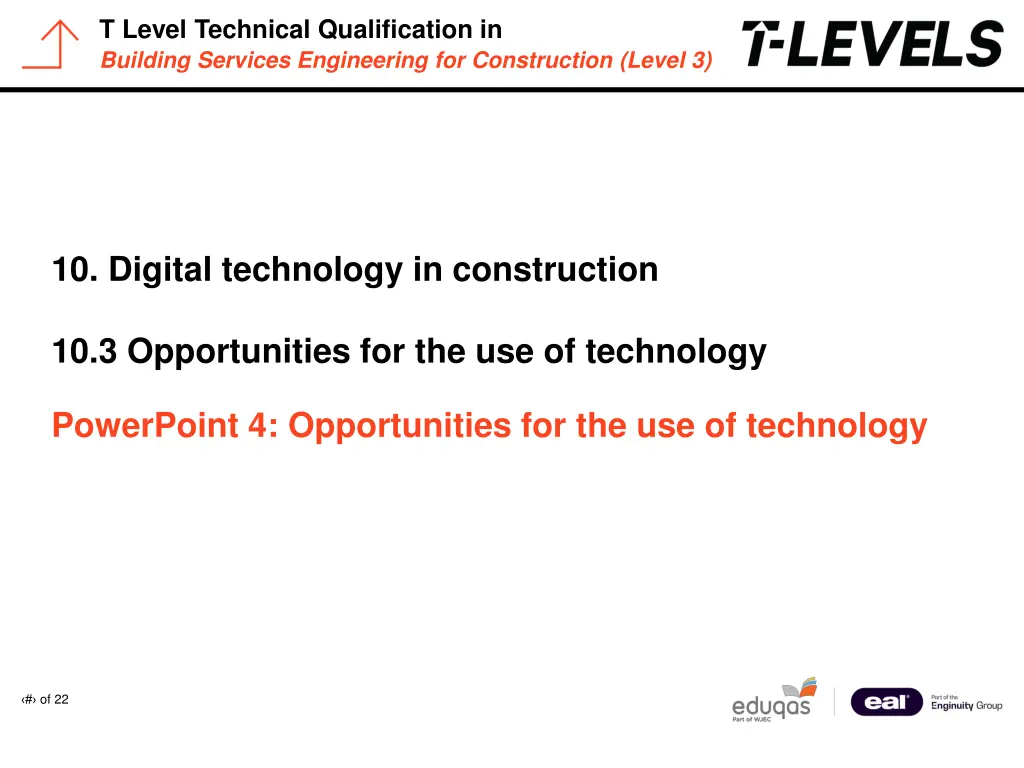
Machine Manufacturing Innovations in Building Services
Explore the latest advancements in machine manufacturing for construction, including CNC machining, digitalization, IoT integration, and robotics. Discover how technology is revolutionizing the industry, improving efficiency, reducing costs, and enhancing productivity.
Uploaded on | 1 Views
Download Presentation

Please find below an Image/Link to download the presentation.
The content on the website is provided AS IS for your information and personal use only. It may not be sold, licensed, or shared on other websites without obtaining consent from the author. If you encounter any issues during the download, it is possible that the publisher has removed the file from their server.
You are allowed to download the files provided on this website for personal or commercial use, subject to the condition that they are used lawfully. All files are the property of their respective owners.
The content on the website is provided AS IS for your information and personal use only. It may not be sold, licensed, or shared on other websites without obtaining consent from the author.
E N D
Presentation Transcript
T Level Technical Qualification in Building Services Engineering for Construction (Level 3) PowerPoint presentation 10.3 Opportunities for the use of technology 10. Digital technology in construction PowerPoint 4: Opportunities for the use of technology # of 22
T Level Technical Qualification in Building Services Engineering for Construction (Level 3) Computer numerical control machining (CNC) CNC milling, or computer numerical control milling, is a machining process which employs computerised controls and rotating multi-point cutting tools to progressively remove material from the workpiece (blank) and produce a custom-designed part or product. CNC machining software: Translates your drawings and CAD models into code. Reads the code and runs the manufacturing machinery accordingly. Automating this part is easy with CAM (computer-aided manufacturing) software. # of 22
T Level Technical Qualification in Building Services Engineering for Construction (Level 3) Machine manufacturing The increasing digitalisation of manufacturing is changing the way machines are designed and built. A machine uses power to control movement to perform a task or action, reducing the amount of human work required to complete it. Machines can also be mechanical systems, which include computers and sensors to control and monitor output. Machine manufacturers are adopting new technologies to increase productivity, improve manufacturing and reduce costs. Machinery manufacturing encompasses seven major sectors agriculture, construction and mining machinery, industrial machinery, commercial and service industry machinery, metalworking machinery, ventilation, heating, air conditioning (HVAC) and commercial refrigeration equipment. # of 22
T Level Technical Qualification in Building Services Engineering for Construction (Level 3) Development of machine manufacturing Manufacturers are using internet of things (IoT) to help make decisions on how a product should be manufactured, how downtime can be minimised and how production costs can be lowered. Collaboration between facility workers can help companies to produce smarter machines, better processes and shorten time-to-market. More prototypes are becoming digital, which can speed up the process and allow for simulation and testing in real time. Machinery manufacturers are working to become more profitable based on data collected from their own operations, by increasing precision and visibility in the supply chain and by cutting inventory costs. # of 22
T Level Technical Qualification in Building Services Engineering for Construction (Level 3) Machine manufacturing through robotics Automated manufacturing solutions aim for maximum efficiency, safety and competitive advantage in the market. Fully autonomous robots can be used for high-volume, repetitive processes. Other manufacturing automation solutions include robots used to help people with more intricate tasks. The robot executes components of the process such as lifting, holding and moving heavy pieces. .Advantages of manufacturing robots: Can automate repetitive tasks Reduce margins of error to negligible rates Enable human workers to focus on more productive areas of the operation. # of 22
T Level Technical Qualification in Building Services Engineering for Construction (Level 3) Machine manufacturing through robotics Advantages of machine manufacturing through robotics: Robots can be programmed to operate 24/7, even in lights-out situations, for continuous production. Robotic equipment is highly flexible and can be customised to perform complex functions. Automation can be highly cost-effective for nearly every size of company. Robots protect workers from repetitive, mundane and dangerous tasks, while also creating more desirable jobs in engineering, programming, management and equipment maintenance. In a world where sustainability and carbon reduction is key, robots save on utilities, since they do not require climate control or lighting, and they create cleaner spaces. # of 22
T Level Technical Qualification in Building Services Engineering for Construction (Level 3) Robotics in construction A construction site is a complex system involving many disciplines working simultaneously. Construction is one of the least automated industries. Robots do not yet play a significant role in any step of a building s lifecycle. Construction tasks can be difficult to automate. The construction worksite is the primary obstacle to robotic automation. Robots excel at repetitive tasks in a controlled environment. Construction sites are the opposite of this. Robots need to be able to adapt to real- time variability in their environment with little to no reprogramming in order to be profitable and productive. However, several new robots under development could change this. # of 22
T Level Technical Qualification in Building Services Engineering for Construction (Level 3) Robotics in construction There are a few different types of construction robots that are poised to break into the construction market at a mass scale: 3D-printing robots that can build large buildings on demand. A mobile robotic arm controls a 3D-printer, and with a set of pre- programmed instructions, this system 3D-prints an entire structurally safe building. Bricklaying robots used to build two-storey structures, as well as working with design elements like steel-reinforced concrete columns and suspended concrete slabs. # of 22
T Level Technical Qualification in Building Services Engineering for Construction (Level 3) Additive manufacturing through robotics 3D-printing in construction, also known as additive manufacturing, uses a number of printing methods: extrusion (concrete/cement, wax, foam, polymers) powder bonding (polymer bond, reactive bond, sintering). The three stages to 3D concrete print are: 1. Data preparation: e.g using 3D scanning technology, Trimble pulse, Matterport and (CAD) or (CAM) computer aided manufacture software. 2. Concrete preparation: mixing and placing the concrete into the container, which is then pumped through a nozzle, layer by layer. 3. Component printing: e.g using specialist design software and construction hardware 3D-printing technology (gantry crane or robotic arm). # of 22
T Level Technical Qualification in Building Services Engineering for Construction (Level 3) Additive manufacturing through robotics The limitations of 3D-printing buildings: 3D-printing currently only prints vertical elements, walls. Specialist hardware and software, for operations, limits accessibility to mainstream. Technology needs to be developed to be in line with architect and designer's software. Development of the hardware to produce high-rise built assets needs further development. There is uncertainty as to how 3D-printed elements will integrate with other building components or how they will incorporate services. To stimulate mainstream adoption, particularly in the UK, development of a solution for restricted city centre sites is required. The investment required to bring 3D-printing into the mainstream would be phenomenal. The number of manual workers required will be reduced, resulting in fewer jobs. # of 22
T Level Technical Qualification in Building Services Engineering for Construction (Level 3) Additive manufacturing through robotics The benefits of 3D-printing buildings: Onsite and offsite printing of building components is possible (cladding and structural panels and columns). The process can be undertaken in harsh or dangerous environments which are not suitable for a human workforce. These new capabilities are more efficient and take less time. Sustainable capabilities (use of local materials). The process produces less waste, even zero waste in some cases. Manual labour used onsite is reduced, leading to cost savings. Logistic/transport costs are reduced. Storage requirements are reduced. There is no double handling of materials onsite. A 3D-printer can work 24-hours a day, 7-days a week. The design possibilities are endless. # of 22
T Level Technical Qualification in Building Services Engineering for Construction (Level 3) Additive manufacturing through robotics case study 1 Largest printed building by Apis Cor Foundation: conventional construction by general contractor Walls: 3D-printed by Apis Cor 3D-printing material: gypsum-based mixture developed by Apis Cor Reinforcement: 3D-printed formwork columns, manually filled with rebar and heavy concrete Slabs: precast Roof, windows, insulation: conventional by general contractor # of 22
T Level Technical Qualification in Building Services Engineering for Construction (Level 3) Additive manufacturing through robotics case study 2 Earth House GAIA Materials: Raw earth, straw, rice husk, and lime Construction time: 100 hours Location: Via Castelletto 104, Massa Lombarda (RA) Design: WASP in collaboration with RiceHouse Floor area: 20 sqm Printed building envelope: 30 sqm To read the full case study of the WASP GAIA house, including videos of the construction, go to: https://www.3dwasp.com/en/3d-printed-house- gaia. # of 22 / ..
T Level Technical Qualification in Building Services Engineering for Construction (Level 3) Any questions? # of 22






















